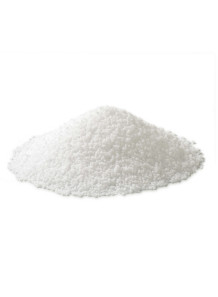Pentadecanoic acid (C15:0, 98%)
- Product Code: 233107
In a 12-system human-cell phenotyping panel, 17 µM C 15:0 reduced key pro-inflammatory mediators (TNF-α, MCP-1, IL-17A/F) and inhibited mTOR while activating AMPK—activities comparable to rapamycin in scope

In a 12-system human-cell phenotyping panel, 17 µM C 15:0 reduced key pro-inflammatory mediators (TNF-α, MCP-1, IL-17A/F) and inhibited mTOR while activating AMPK—activities comparable to rapamycin in scope
Why C 15:0 (pentadecanoic acid) is interesting for skin
| Benefit cluster | What the studies show | Practical implications for topical use |
|---|---|---|
| Anti-inflammatory / “inflamm-aging” control | In a 12-system human-cell phenotyping panel, 17 µM C 15:0 reduced key pro-inflammatory mediators (TNF-α, MCP-1, IL-17A/F) and inhibited mTOR while activating AMPK—activities comparable to rapamycin in scope PMC | May calm redness, itching, and low-grade chronic inflammation that drives premature ageing or flare-ups (e.g. mild dermatitis, photo-irritation) |
| Membrane & barrier strengthening | C 15:0 inserts into phospholipid bilayers, lowers lipid-peroxidation risk, and has been promoted for “locking in moisture” and restoring skin-barrier resiliency in consumer-facing reports The Chalkboard | Acts as a saturated emollient that can cut transepidermal water loss (TEWL) and support suppleness—similar to shorter-chain fatty acids but with better oxidative stability |
| Antimicrobial / anti-biofilm | • In vitro growth inhibition of Staphylococcus epidermidis, Klebsiella pneumoniae and Candida albicans PMC • A C 15:0 coating prevented and destabilised mixed Candida–Klebsiella biofilms on polymer surfaces ResearchGate |
Adds preservative “boost” or helps keep micro-flora in check (useful in deodorants, acne or scalp products, wound/patch dressings) |
| Mitochondrial & antioxidant support | Cell studies report ~45 % drop in reactive oxygen species (ROS) after C 15:0 treatment and improved mitochondrial function The Chalkboard | May translate into better recovery from UV- or pollution-induced oxidative stress, supporting anti-ageing claims |
| Possible ceramide/long-chain lipid synthesis link | Odd-chain fatty acids such as C 15:0 can be elongated or used as acyl donors; C 15 ceramide is commercially available for skin-lipid research, hinting at a role in SC lipid diversity Nature | Potential to synergise with niacinamide or phytosphingosine to boost in-situ ceramide levels (needs validation) |
Formulation notes
-
INCI / identifiers: Pentadecanoic Acid, CAS 1002-84-2. No specific restrictions in EU, USA or ASEAN lists.
-
Physical properties: MP ≈ 52 °C, white crystalline solid; X-log P ≈ 5.8 → strongly lipophilic.
-
Typical loadings: 0.1–1 % w/w in the oil phase for leave-on products; up to 2 % in rinse-off (buffered by surfactant micelles). Higher levels risk crystal bloom on cooling.
-
Processing tips
-
Melt with the main emollient (caprylic/capric triglyceride or squalane) at ≥ 60 °C; cool under shear to avoid graininess.
-
If clarity is needed (e.g. clear gel), pre-solubilise in PEG-7 glyceryl cocoate or a non-ionic surfactant before adding to water phase.
-
Compatible with antioxidants (mixed tocopherols) but oxidation is minimal because it is saturated.
-
-
Skin feel: gives a “cushiony” occlusive layer similar to palmitic/stearic blends but without waxy drag.
Usage: For any skin care product
Mixing method: dissolved in oil
Usage rate: 1-20%
Product characteristics: : White flake powder
Solubility: Can dissolve in oil
Storage: If you want to keep it for the long term Store at room temperature. At least 24 months old
INCI Name : Pentadecanoic acid
| Mechanism | - |
| Appearance | - |
| Longevity | - |
| Strength | - |
| Storage | - |
| Shelf Life | - |
| Allergen(s) | - |
| Dosage (Range) | - |
| Recommended Dosage | - |
| Dosage (Per Day) | - |
| Recommended Dosage (Per Day) | - |
| Mix Method | - |
| Heat Resistance | - |
| Stable in pH range | - |
| Solubility | - |
| Product Types | - |
| INCI | - |
Purchase History for
Cart
No products



